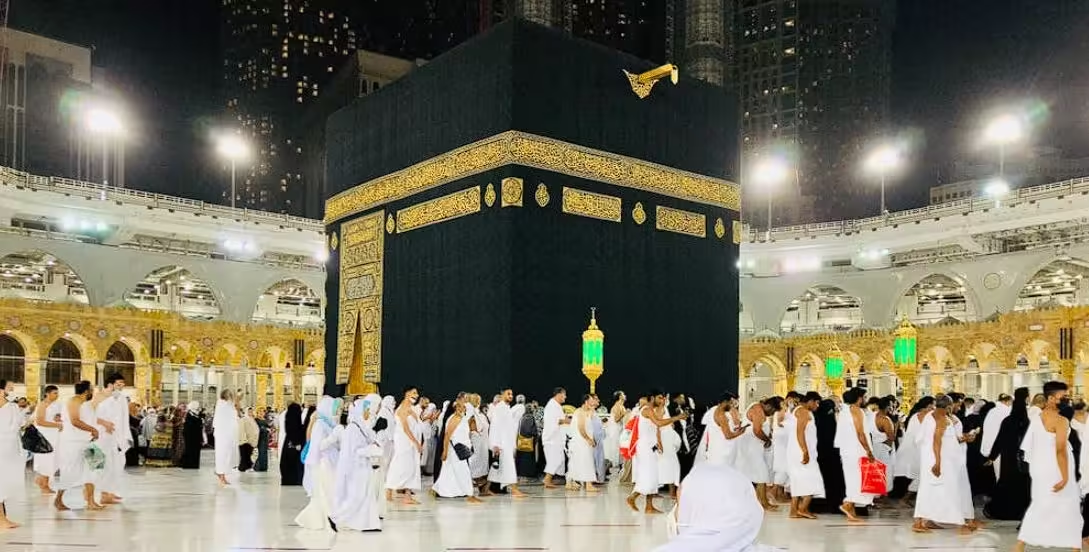Introduction
The annual Hajj pilgrimage, a sacred obligation for Muslims worldwide, turned into a heart-wrenching tragedy this year. As millions of faithful gathered in Mecca, Saudi Arabia, to fulfill their religious duty, extreme heat claimed the lives of over 1,300 pilgrims. The scorching temperatures, exceeding 50°C (122°F), exposed the vulnerabilities of those who embarked on this spiritual journey. Here’s a comprehensive look at the events surrounding this devastating loss.
The Hajj Disaster: A Grim Toll
Between June 14 and 19, 2024, the Hajj pilgrimage witnessed a staggering death toll. At least 1,301 people succumbed to the intense heat, enduring temperatures that pushed human endurance to its limits1. The Grand Mosque of Mecca recorded a sweltering 51.8°C (125.2°F), making it a perilous environment for the faithful.
Nationalities Affected
The tragedy transcended borders, affecting pilgrims from diverse nations. Here are some of the countries that mourned the loss of their citizens:
- Egypt: The hardest-hit, with 658 deaths, most of them unregistered pilgrims.
- Indonesia: 213 fatalities, including confirmed heatstroke cases.
- Jordan: 75 lives lost due to extreme heat.
- Tunisia: 49 pilgrims perished during a sharp rise in temperatures.
- India: 98 deaths, highlighting the global impact.
- Iraq: 19 fatalities among pilgrims from the Kurdistan Region.
- United States: 2 American pilgrims lost their lives1.
Challenges and Misjudgments
The Saudi health system grappled with over 2,700 cases of “heat exhaustion,” emphasizing the severity of the situation. Many pilgrims performed the Hajj without official registration due to financial constraints, leading to prolonged dehydration and exposure to extreme heat. Air-conditioned facilities and essential services remained inaccessible for these unregistered pilgrims, exacerbating their vulnerability1. Witnesses described pilgrims lying motionless along roadsides, while ambulances struggled to cope with the crisis1.
Saudi Response and Future Considerations
Saudi Arabia’s health minister, Fahd Al-Jalajel, deemed this year’s Hajj management “successful.” However, the tragedy underscores the need for better risk assessment and preparedness. As climate change intensifies, heat stress for future pilgrims will surpass the “extreme danger threshold” between 2047 and 2052 and 2079 and 20861. The timing of the Hajj, which advances about 11 days each year, may need reconsideration to mitigate extreme weather conditions.
Conclusion
The 2024 Hajj disaster serves as a somber reminder of the delicate balance between faith and safety. As the global Muslim community mourns, authorities must learn from this tragedy to safeguard pilgrims’ lives in the years to come. The Hajj, one of Islam’s five pillars, should be a journey of spiritual fulfillment, not an ordeal of suffering and loss1.
The Hajj: A Journey Through Time
The Hajj, a pilgrimage to Mecca in Saudi Arabia, is the holiest Islamic pilgrimage and a mandatory duty for all able-bodied Muslims at least once in their lifetime. This spiritual journey, steeped in history and tradition, transcends geographical boundaries, uniting Muslims worldwide in a powerful display of faith and devotion. To understand the significance of the Hajj today, let’s delve into its rich past.
Origins of the Hajj: A Legacy of Abraham
According to Islamic tradition, the roots of the Hajj stretch back millennia to the Prophet Abraham (considered a patriarch in Judaism, Christianity, and Islam). Muslims believe God commanded Abraham to build the Kaaba, a cubical structure considered the holiest site in Islam, and establish the pilgrimage rituals. The Kaaba itself predates Islam, serving as a sacred site for worshippers of various deities in pre-Islamic Arabia.
Evolution in Pre-Islamic Arabia
While the core rituals associated with Abraham are central to the Hajj’s narrative, pre-Islamic Arabia saw the pilgrimage evolve with the practices of various tribes. The Kaaba housed idols of multiple deities, and pilgrims observed rituals specific to their tribal traditions. Animal sacrifices, divination practices, and nudity during circumambulation were all part of the pre-Islamic Hajj.
The Prophet Muhammad and the Transformation
Prophet Muhammad’s last pilgrimage in 632 CE, known as the Farewell Pilgrimage, established the Hajj rituals as they are practiced today. He abolished pagan practices, emphasizing the core rituals linked to Abraham and his family. This pilgrimage set a precedent for future generations, ensuring the Hajj remained a unifying and purely Islamic practice.
Throughout Islamic History
Over the centuries, the Hajj has served as a powerful symbol of Islamic unity. Muslims from across the globe, regardless of ethnicity or social status, undertake the pilgrimage together. The journey fosters a sense of brotherhood and equality, reminding pilgrims of their shared faith and submission to God.
The Hajj has also played a significant role in cultural exchange and trade. Pilgrimage routes became arteries for the flow of ideas, knowledge, and goods. Mecca transformed into a bustling center of commerce, attracting merchants and scholars from various regions.
In the Modern Era: Challenges and Considerations
Today, the Hajj continues to be a cornerstone of Islamic practice. However, the modern era presents new challenges. The sheer number of pilgrims necessitates logistical planning and crowd management strategies. Furthermore, climate change and extreme weather events raise concerns about pilgrim safety.
The tragedy of the 2024 Hajj, where scorching temperatures claimed over 1,300 lives, underscores the need for robust risk assessment and adaptation measures. Saudi authorities are constantly working to improve infrastructure, expand air-conditioned facilities, and enhance emergency response systems.





